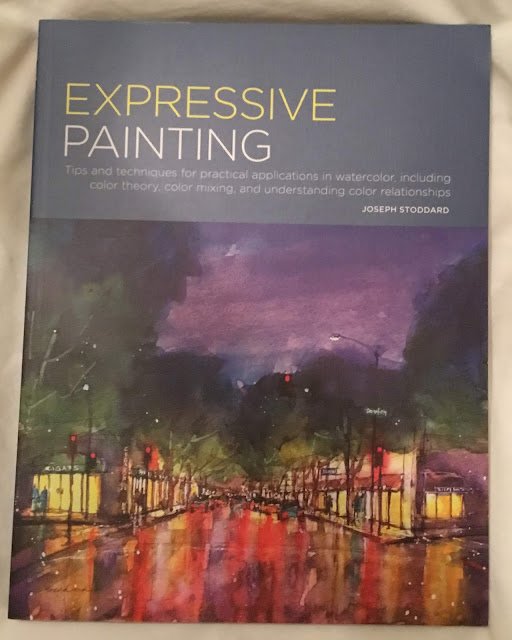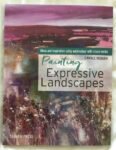On the face of it, this is a very similar book to the Jane…

Expressive Painting, Joseph Stoddard – Book Review
My birthday’s coming up and I have loads of new art instruction books to look through. First up is this 128 page volume by Joseph Stoddard, which I’ve had my eye on for a while.
Before I get on to specifics, I should talk about the weird feeling I get after reading this book that I’m not sure where it’s coming from. First, I wonder what its target market is. At the start of the book it felt like it was aimed at the comparative beginner – someone who’s read the Frank Clarke book and is looking to take a step further. The first 40% or so felt like this. But then there was the 40% in the middle (chapters on Colour and Painting) where there were lots of interesting tips. And second, was this a book about watercolour painting of (mainly) urban scenes or a book about urban sketching with watercolour overlays? I ask this because Joseph’s style is to draw the scene first in pencil, then go over it in pen, then to paint it. Still, I was aware when I added this book to my wishlist that it bordered on urban sketching, so I went into it with my eyes open.
Joseph has a definite style. As I said, he likes his urban settings and he likes to draw first and colour in later. But the other things about his style are that he’s really adventurous with his colour choices (which I like and was inspired by) and that he likes to lay the paint on real thick, like acrylics (which I’m told I do and that I try to move away from but this guy slaps it on like Lesley Joseph at the dressing table). The colour scheme on his palette includes cadmiums, which he misleadingly refers to as transparent, and which take some of the shine away from his paintings. In terms of content, he paints really good urban scenes but his still lifes are nothing special and his landscapes leave me cold. So there’s stuff there to inspire me but I’m being choosy about what to try to emulate.
I found Joseph’s writing style grated a little. It was a bit too instructional (do this, do that), and a bit too specific in places (I use this brand of eraser!). I think there would be arguments if I attended one of his classes.
What were the good things about this book, then? What were the bits that I learned from and that I expect to make a difference to my painting? Well, as well as the adventurous colours, he had some interesting thoughts on painting skies and on painting vignettes (by which he means not painting up to the edge, keeping the focus in the middle, a bit like Jean Haines). But the best two learning points in the text (and most inspiring features of his paintings) are night scenes and reflections in the street on rainy days. The choice of cover for the book was no accident.
I’m giving this one two palettes. There were lessons and inspirations in there but (i) not enough of them, and (ii) too many things about his style that I didn’t like. And his writing style grated a little. I don’t regret buying it but it comes with a word of warning that it should only be read by aspiring artists with enough wherewithal to be able to pick and choose what to take out of the book and what to ignore.
You can find this book and more reviews of it at Amazon UK here.As an Amazon Associate, I earn commission from qualifying purchases but this costs absolutely nothing extra to you.








Leave a Reply